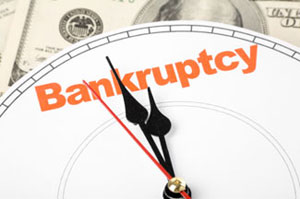Obtaining a Mortgage After Bankruptcy
By Michael Zuren, PhD Updated on 7/19/2017 There are strict guidelines for mortgage financing after a bankruptcy. Many individuals who have had a bankruptcy mistakenly think that they will not be able to qualify for a mortgage or to refinance their current mortgage. But depending on the type of loan, an individual may qualify in as little as one year after filing for bankruptcy.
There are strict guidelines for mortgage financing after a bankruptcy. Many individuals who have had a bankruptcy mistakenly think that they will not be able to qualify for a mortgage or to refinance their current mortgage. But depending on the type of loan, an individual may qualify in as little as one year after filing for bankruptcy.
The United States Bankruptcy Code includes two types of personal bankruptcies. The following is a brief description of each.
Chapter 7 is the most common type of bankruptcy in the United States. An individual filing for a Chapter 7 bankruptcy must meet the requirements of the "means test for eligibility."
Eligibility for the chapter 7 bankruptcy allows the creditor to repossess any property used as collateral on the debt discharged in the bankruptcy. The bankruptcy trustee may also liquidate any non-exempt property and distribute the proceeds to any unsecured creditors. Exempt property typically includes clothes and household goods.
Other assets such as social security payments, unemployment compensation, older automobiles with little value, tools used for work, and books are excluded from liquidation although this may vary by state.
The courts may not discharge some debt including federal debt, tax liens, student loans, and alimony and child support. Each state sets the limit for how much property is exempt in bankruptcy. The Chapter 7 bankruptcy can only be used by an individual every 8 years.
The Chapter 13 bankruptcy allows the debtor to keep all their possessions and assets, but they must accept a payment plan (based on their income) to repay their creditors. The repayment amount is based on the debtor's income, expenses, the value of any property, and debt discharged. The repayment plans usually are for 3 to 5 years but can be paid off earlier if the debtor is able.
The Chapter 13 bankruptcy requires proof of regular income and has income limitations with payments made to a trustee responsible for payments to the creditors. Chapter 13 bankruptcy does not require repayment to unsecured debt and medical bills.
For Chapter 7 bankruptcies, FHA requires the bankruptcy to be discharged for a minimum of 2 years before an individual is eligible for mortgage financing; conventional financing requires this type of bankruptcy discharged for 4 years.
The waiting period for mortgage financing after a Chapter 13 bankruptcy is one year after filing with court permission for FHA financing where as conventional borrowers need to wait for a minimum of 24 months.
There are special programs, such as the “Back to Work Program” offered by FHA, which allows individuals to qualify for mortgage financing as soon as one year after a bankruptcy discharge. This program has strict requirements. For further information regarding the “Back to Work Program,” consult an FHA approved lender. Lenders will require a copy of your bankruptcy schedules and discharge paper; in addition to a thorough letter of explanation documenting the reason for the bankruptcy. Lenders will also require credit to be reestablished with no derogatory credit since the bankruptcy. Ideally, an individual should have one installment loan, and two revolving accounts (credit cards) with at least a 12-month payment history to show the lender they can manage their credit. For the revolving credit, it is in your best interest to keep the balance under 30% of the available credit limit; by doing this, you will be maximizing your credit scores.
There are other factors that lenders will use to qualify you for a mortgage after bankruptcy. These include down payment, income, employment history, and income stability. For additional information regarding mortgage financing after a bankruptcy, contact your loan officer.

Didn't find the answer you wanted? Ask one of your own.

Contributing Authors
Related Articles
Ask our community a question.
Searching Today's Rates...

Featured Lenders
Cameron Burke
Vision One Mortgage
Huntington Beach, CA
Lisa Stepp
RBS Citizens
Clifton Park, NY
Kat Whitman
Whitman Met, Inc.
Sacramento, CA




